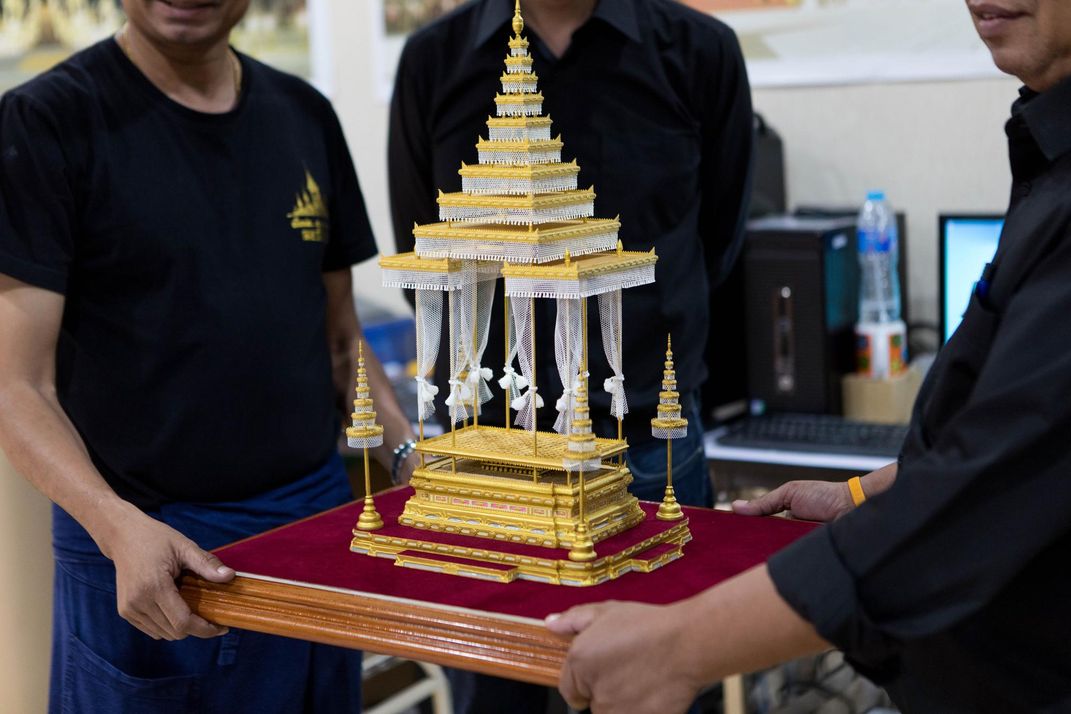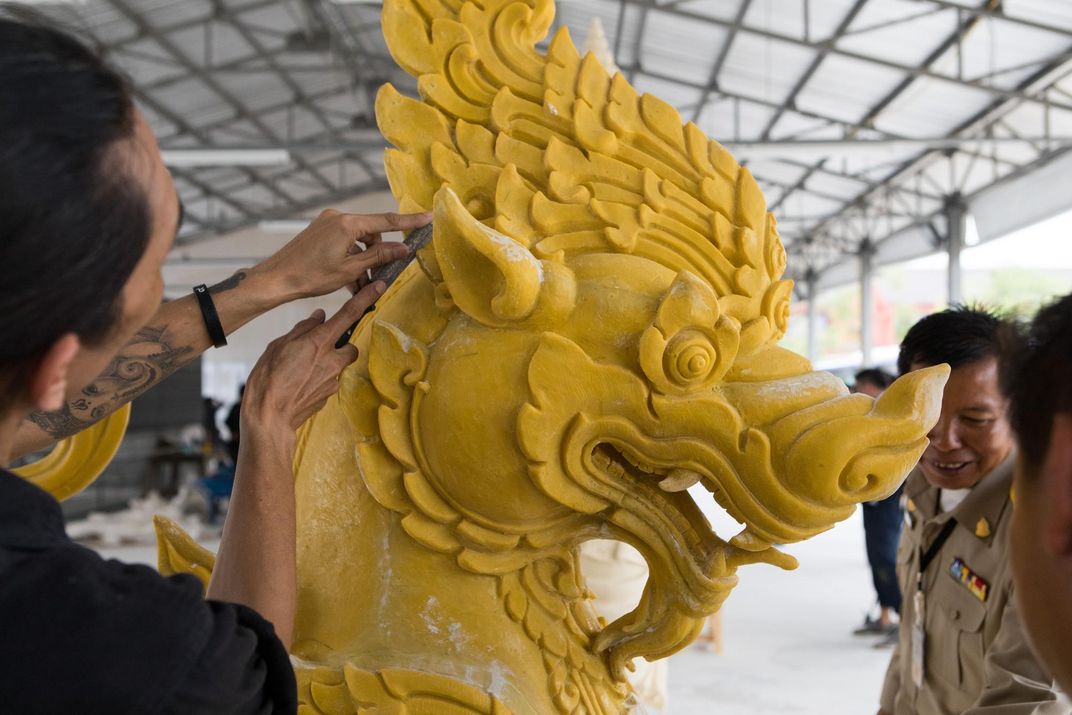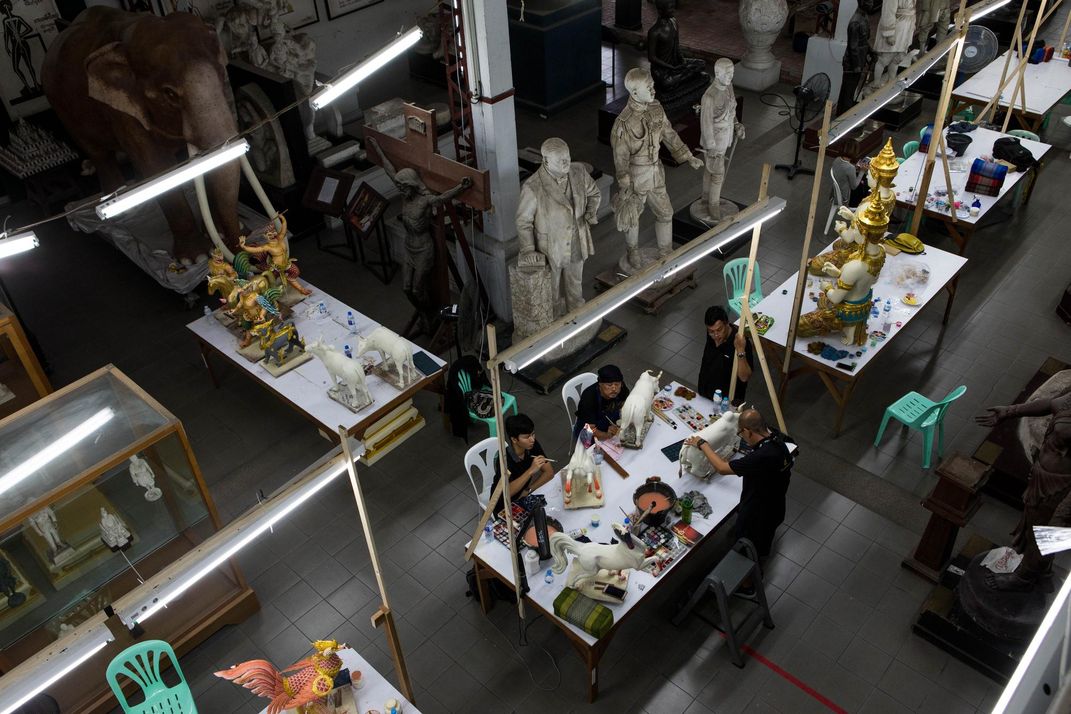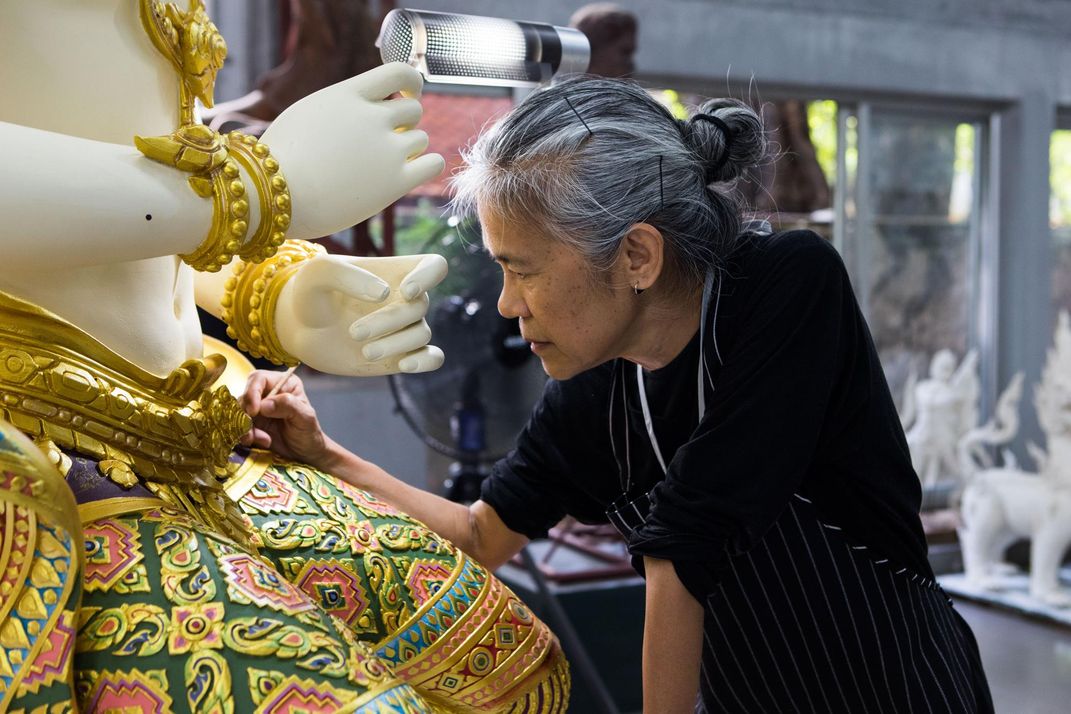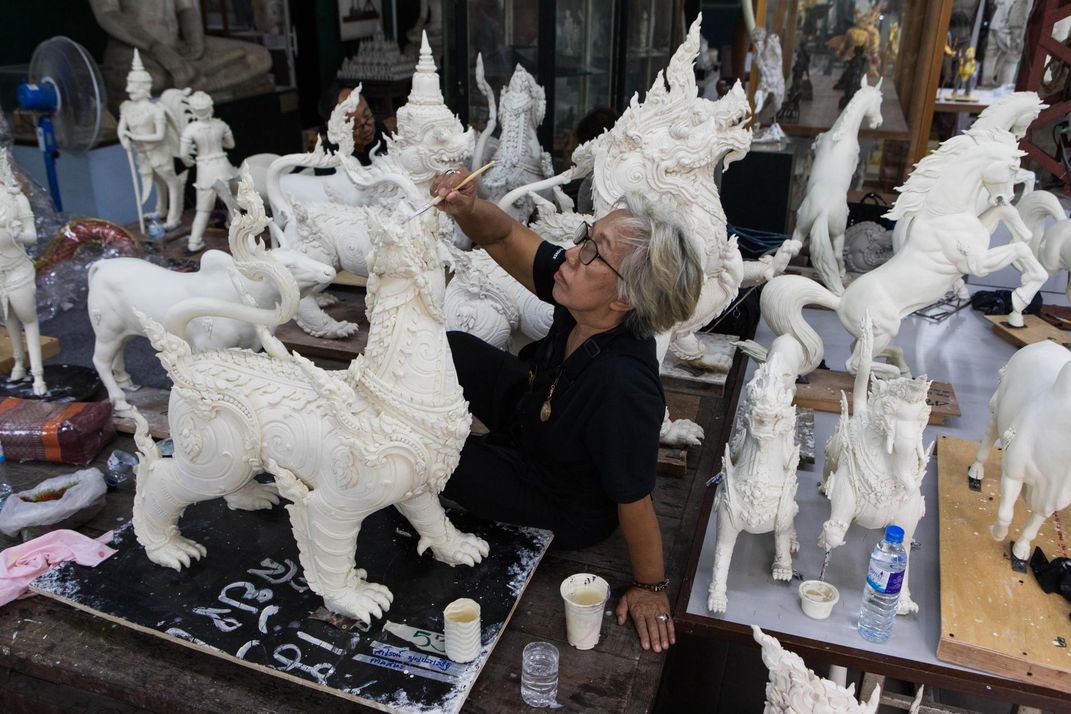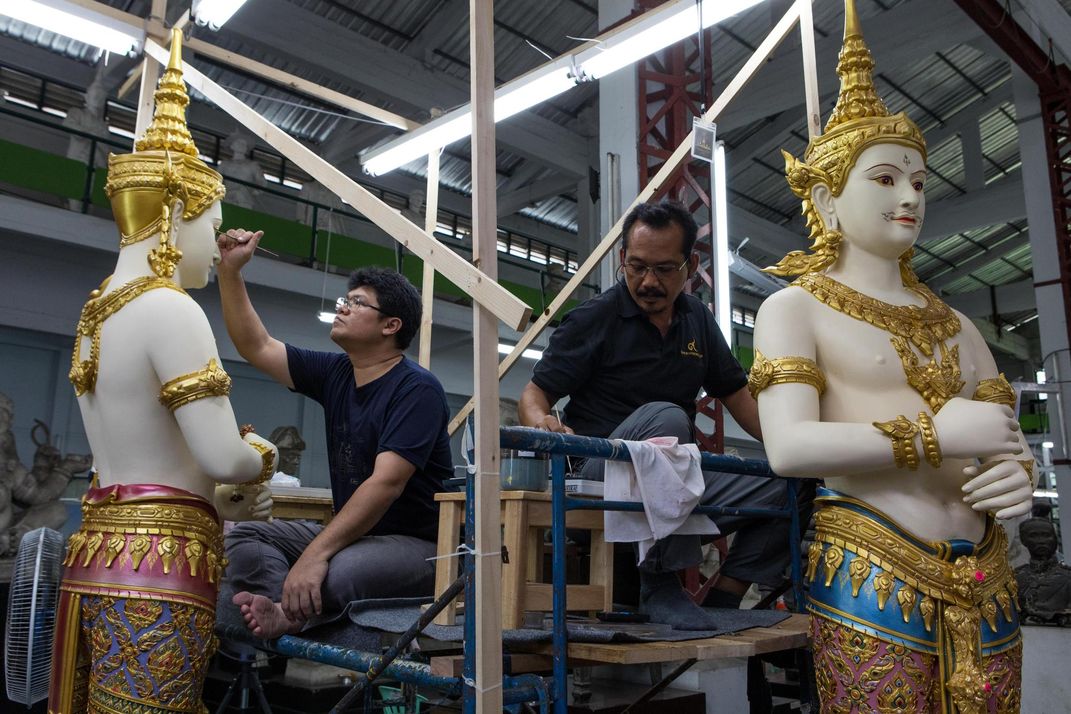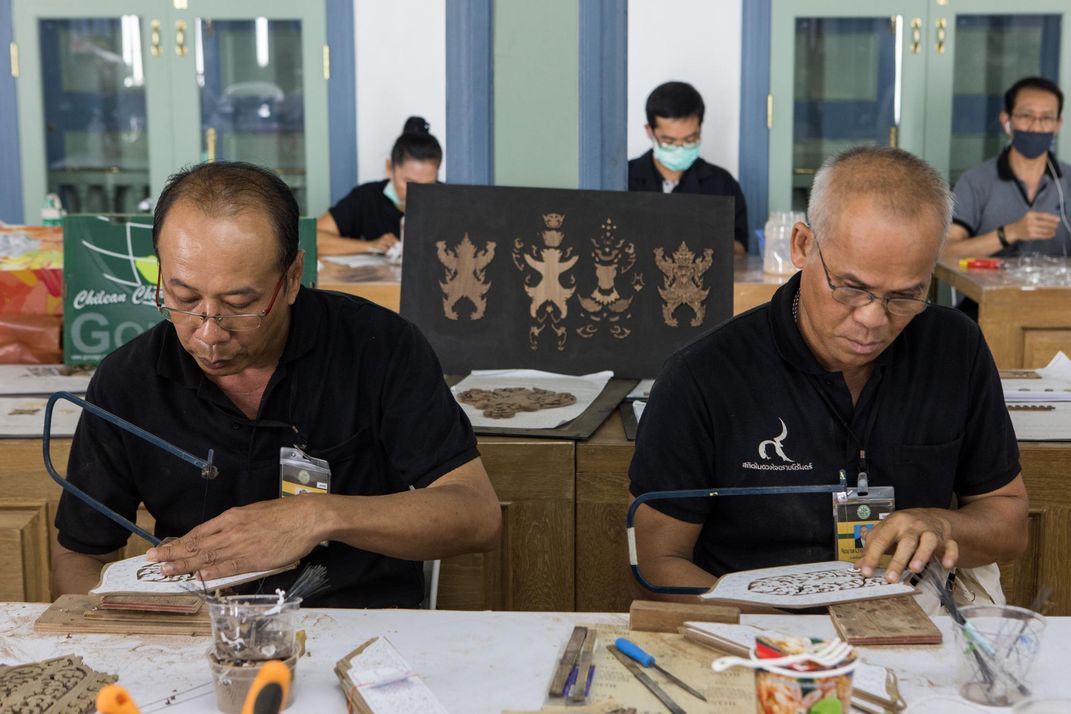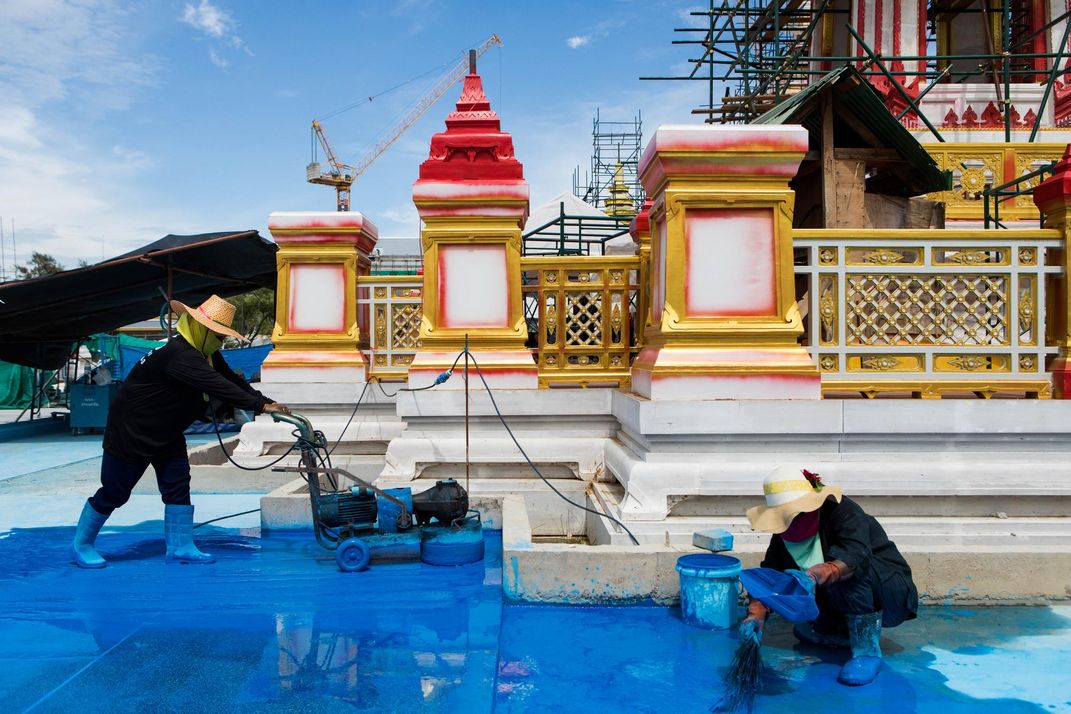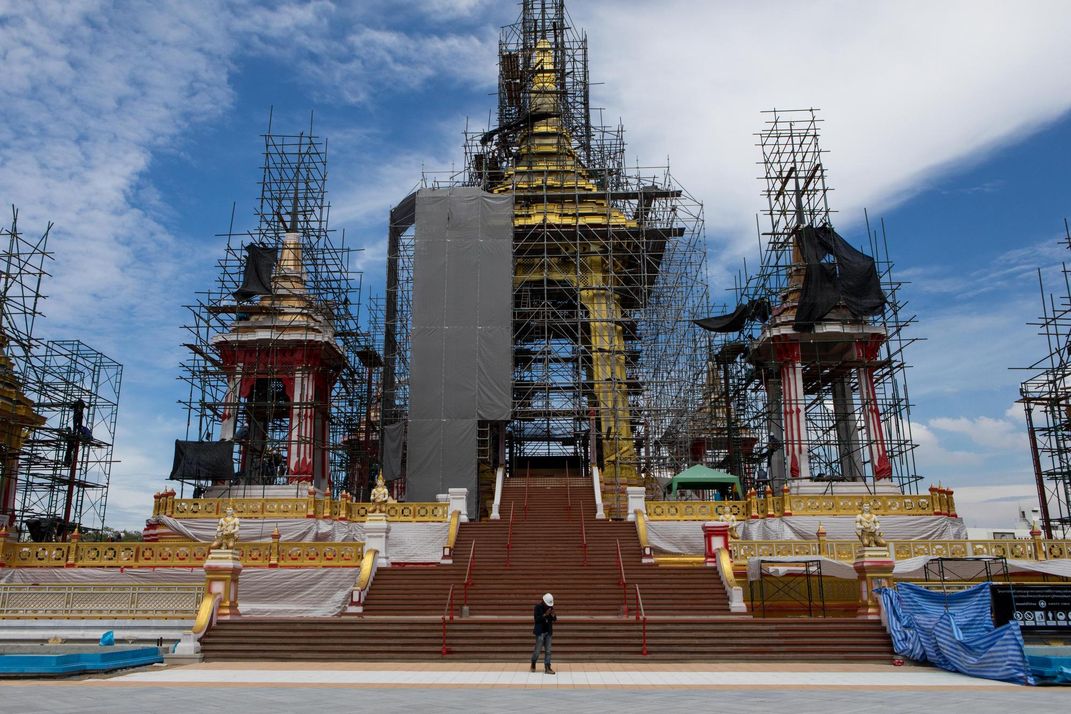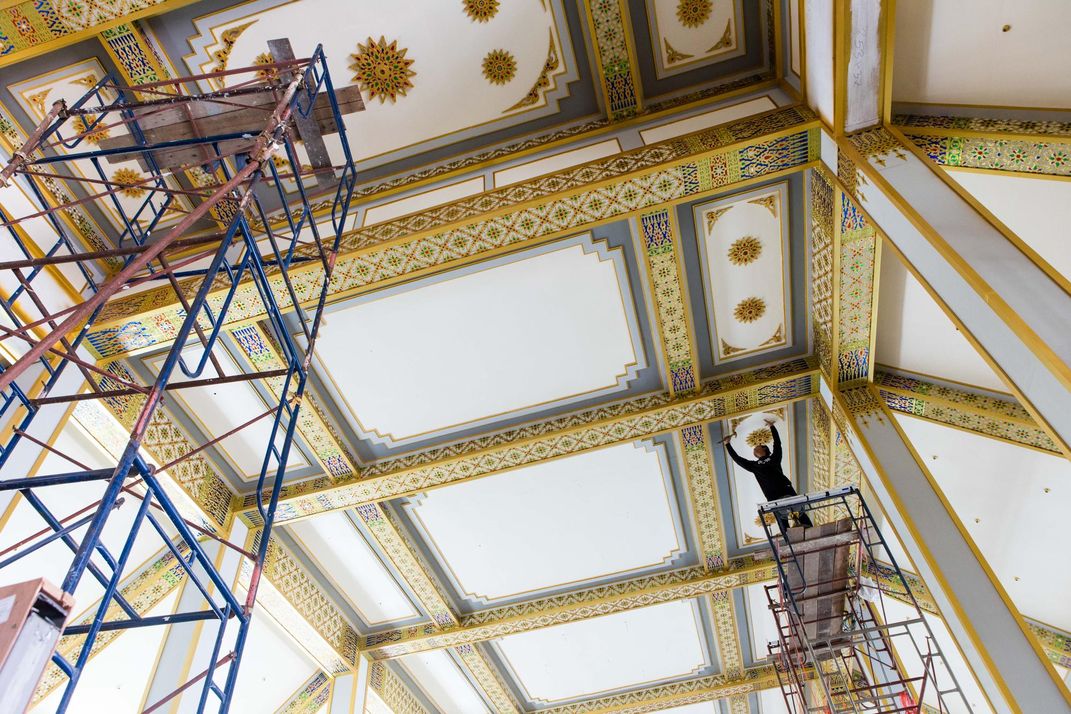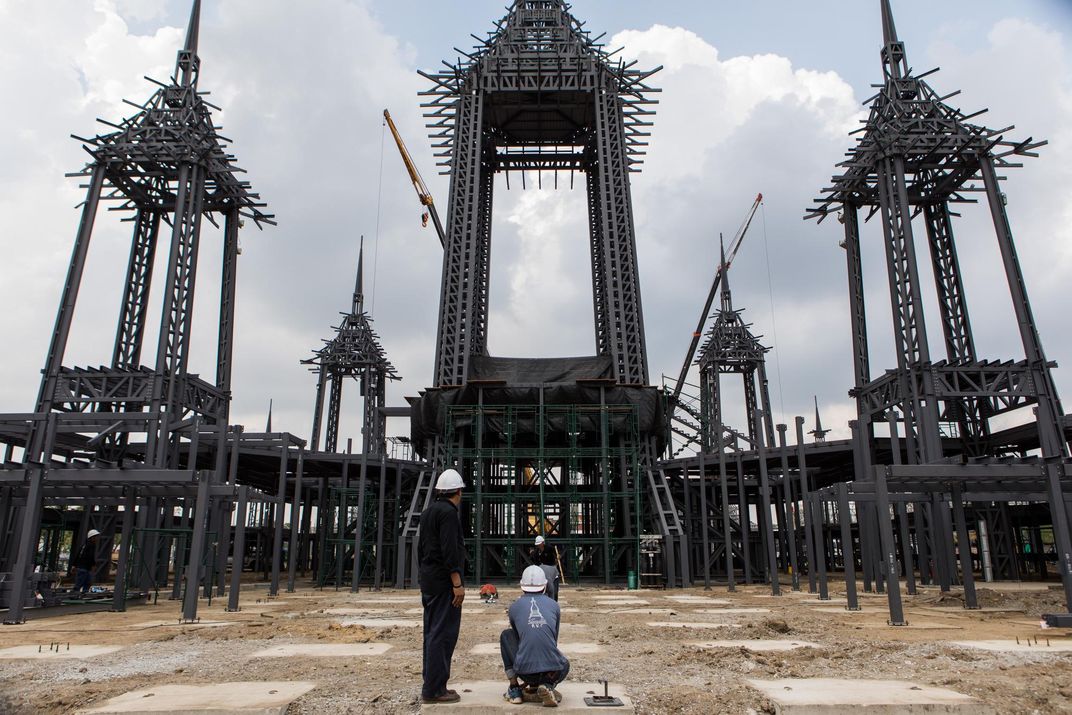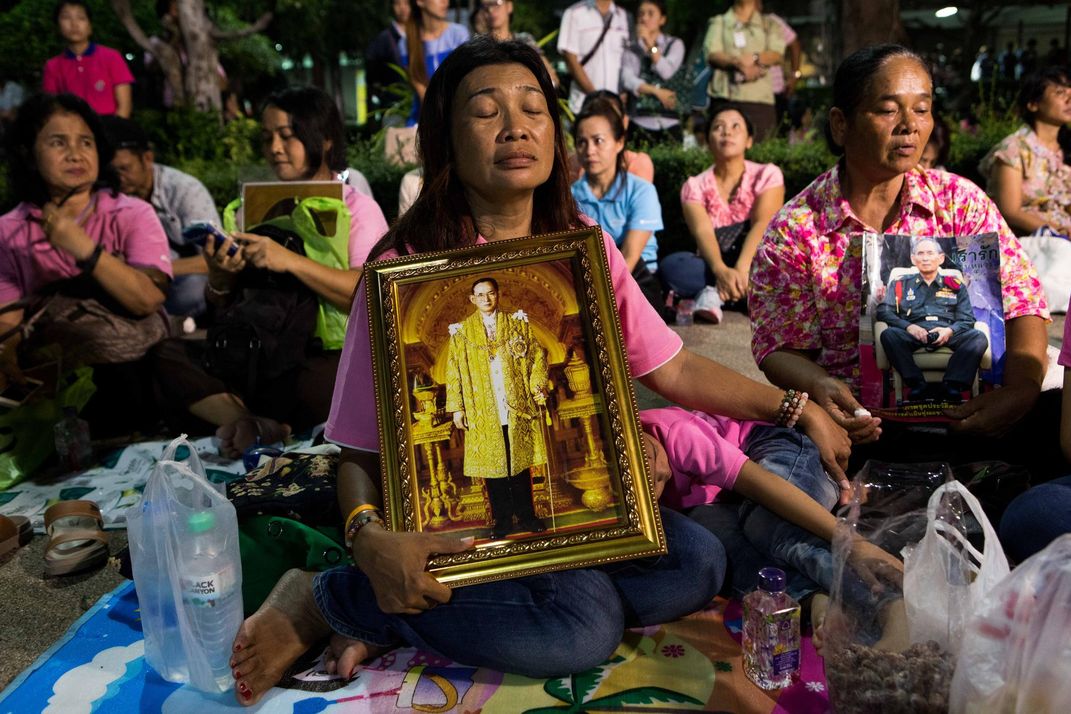An Exclusive Behind-the-Scenes Look at the Funeral Fit for a King
For the first time in more than 70 years, Thailand is saying farewell to its monarch
In a large theatre room close to Bangkok’s Grand Palace, 20 architects from the Thai government’s Fine Arts Department are working tirelessly on the finer details of a giant, ornate funeral pyre.
Mere feet from their room, their pencilled designs are taking physical form. Nine steel pavilions, rising several stories high, have already been erected at the centre of the royal cremation park, or Sanam Luang. The skeletal thrones that stood bare just weeks ago have now been adorned with gilded and carved cedar, teak and timber. Everything must be ready for October 26 when Thailand’s beloved monarch of 70 years, Bhumibol Adulyadej, also known as Rama IX, will be cremated one year after his passing.
“You see, I could try and have Garuda there,” says Naruporn Saowanit almost to himself, referencing the mythical bird-like creature of Hindu and Buddhist mythology. “After all, that’s the royal emblem.” He adds, his voice trailing off as he uses a pencil to retrace the single roofing strut he’s been working on for hours. “Or, I could try and use an image of the great swan.”
When it comes to crafting a royal funeral pyre the devil is in the detail. Every carving, flick of the paint brush, or wooden strut has been designed, excoriated and redesigned multiple times.
His ruminations over the tiniest technicality is matched by his colleagues, who for months now have worked nearly non-stop to ensure this project, while guaranteed to be remembered, is quite literally fit for a king.
Yet the agony of choice, and mounds of discarded paper, belies the rigidity in design. Charinee Artachinda, a colleague of Saowanit, describes their process as adding small evolutions within, not revolutions overshadowing, the tradition.
“In traditional Thai art and architecture, we have different ‘levels’ to our art and design,” explains Artachinda, as she leafs through some books of royal designs. The books themselves are part history, part instruction. Stored in the libraries of major universities, they offer the reader loose guides to design possibilities and historical precedent. Every now and again she points to tessellating patterns or symbols and underlines their importance, stating, “royal.”
“Now we know and can pass on the knowledge of this tradition. It is very important.” She says, explaining that in design school, no one taught her how to prepare for a King’s funeral – it’s bad luck. Instead, the tradition of a royal cremation – which has roots tracing back to the 17th-century Ayutthaya Kingdom – has historically been passed on by studying historical images, or through word of mouth among funeral rite practitioners. Yet with Rama IX’s reign lasting so long, few architects or artists remain who can claim that first-hand experience, meaning a little more interpretation is expected.
In fact, after 70 years on the throne, there are few Thais, full stop, who remember the last king’s funeral, nor how to act accordingly. The Thai government announced shortly after his death that it would publish 10,000 copies of a royal glossary just so those in attendance can follow along to a ritual performed in the Pali-Sanskrit royal tongue.
Today, Thailand’s confusing religious syncretism is rarely as obvious and alive as it is in royal affairs. In royal funerals in particular, Hindu and Buddhist concepts of cosmology take center stage. The dais is adorned with symbols and carvings that make up part of an estimated 500 statues, ranging from animals to gods, touching on both Hindu and Buddhist themes. Among the 12 intricate, hand-painted standing deities, one group of a half-dozen artists work solely on a Phra Phrom, Thai for Brahma, the god of creation in Hinduism.
In the middle of the grounds, nine ceremonial throne pavilions, or “Busabok,” help mark out a concentric design that builds up to the narrow 50-meter-tall Busabok at the very center, within which the king’s body will sit – in a coffin no less; a decision made in advance by the late king that breaks with the traditional urns used in the past.
This main funeral pyre structure is itself a representation of Mount Meru, the centre of the Hindu universe. In an enclosed incinerator within the central spire structure, the late king’s body will be cremated on the second of five day’s worth of funereal ceremonies. In line with more Hindu practices, the cremation itself will in turn be blessed by the highest Buddhist monks in the land.
Elsewhere around Sanam Luang, icons recalling some of the accomplishments of the late king’s reign will dot the grounds. From model reservoirs to water mills and rice fields, King Bhumibol’s work with the poorest Thais is being honored just as much as the man himself, as it was that focus and empathy that helped make him so widely adored in the country.
It is also why no cost was spared when it came to building the pyre itself. With an estimated budget of 1 billion baht ($30 million), the funeral pyre’s magnificence will nonetheless dissolve following the cremation ceremony, disassembled with weeks of finishing. The finest stand alone sections will head to museums, while others will be broken down and distributed to temples around the country.
